Online shopping provides a quick and convenient way to purchase products, and this is especially true for the...
Hearing Aid Batteries
Disposable hearing aid batteries come in four types. Each type of battery for hearing aids has its own specific color code, making it easier to tell them apart. Hearing aids use either disposable batteries or rechargeable batteries. Rechargeable batteries do not need to be changed often and may require a professional to change them. Disposable batteries are designed to be changed by the owner and are relatively easy to install.
Hearing Aid Batteries Overview
There are four types of hearing aid batteries. Each one has its own size, voltage, and capacity.
- Size 10
- Size 312
- Size 13
- Size 675
The Four Types of Hearing Aid Batteries
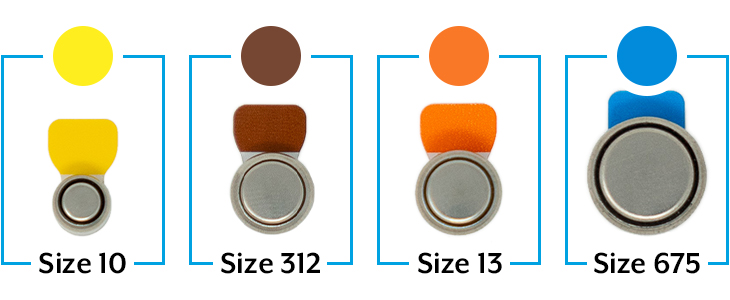
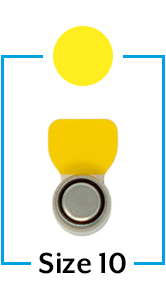
Size 10 Hearing Aid Battery:
- Tag Color: Yellow
- Size: 5.8 x 3.6 millimeters
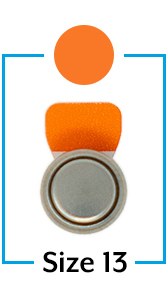
Size 13 Hearing Aid Battery:
- Tag Color: Orange
- Size: 7.9 x 5.4 millimeters
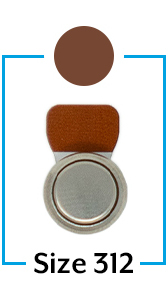
Size 312 Hearing Aid Battery:
- Tag Color: Brown
- Size: 7.9 x 3.6 millimeters
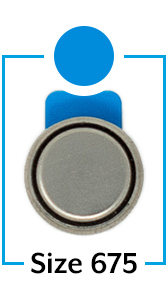
Size 675 Hearing Aid Battery:
- Tag Color: Blue
- Size: 11.6 x 5.4 millimeters
Disposable Hearing Aid Battery Care and Storage
A hearing aid battery is a zinc-air battery and has a tab on one side. This tab serves two purposes. First, it designates what type of battery for hearing aids that it is (see chart above). Secondly, a zinc-air battery remains inactive until air interacts with the zinc in the battery, which then produces an electric current. The tab assures that the battery remains inactive until the user is ready to install the battery. It is recommended that the battery be allowed to sit for a full five minutes before installing to assure that a steady current is being delivered to the hearing aid.
Care and Storage for Hearing Aid Batteries
Oftentimes, hearing aid batteries are sold or purchased in bulk and therefore require storage. Below are some tips to maximize the shelf life of your batteries and tips for changing batteries.
Check the Expiration Date When purchasing hearing aid batteries, or opening a pack that has been kept in storage, be sure to read the expiration date. When purchasing new batteries, make sure they are fresh. When using batteries from stock, be sure to use the oldest batteries first.
Wash Hands Prior to Installing New Batteries Dirt, debris or naturally occurring oils can interfere with the mechanism that creates power in the battery, causing the battery to become depleted sooner than expected. Washing hands thoroughly before handling batteries will minimize this.
Use the "Five Minute Rule Once the tab is removed, a battery should be allowed to sit for five minutes before being installed. This allows air to permeate the metal mesh and activate the zinc within the battery.
Open Battery Door When Not in Use Prevent incidental battery drain by opening the battery door when the hearing aid is not in use. Additionally, this helps to dry the battery by allowing moisture to escape. This will help to prevent corrosion to the battery.
Use a Hearing Aid Dryer Using a hearing aid dryer will help to extend the life of the battery by drying the hearing aid and battery when not being used.
Store Batteries in a Cool, Dry Place Batteries should be stored in a cool, (not cold, i.e. the freezer) dry place until they are needed. Storing batteries in extreme temperatures can jeopardize the chemical stability of the battery and shorten life expectancy.
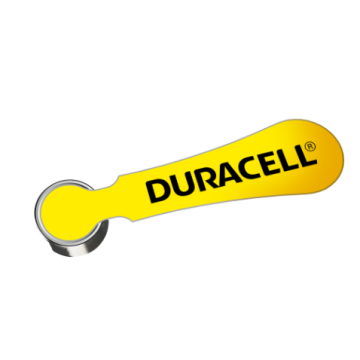
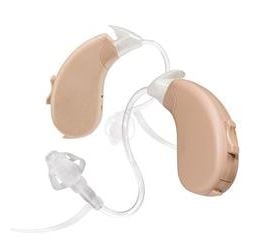
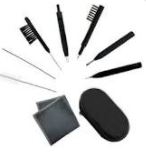

Login and Registration Form